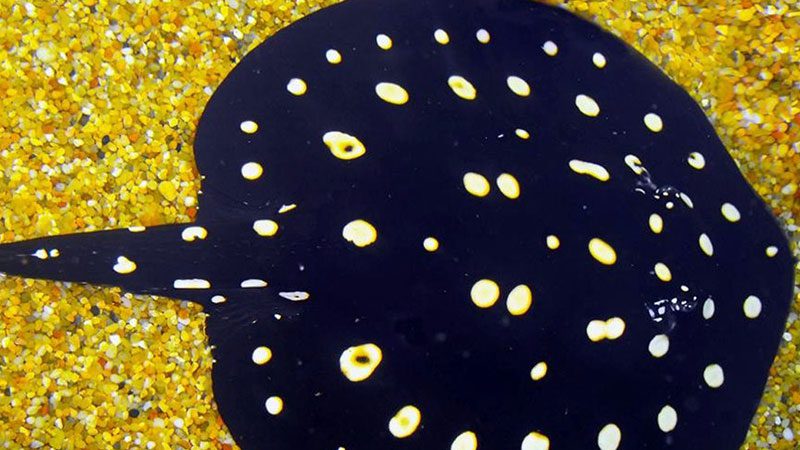Welcome to Lincoln Park Zoo’s new web app! Share your feedback

White-blotched River Stingray
Regenstein Small Mammal-Reptile House
Did You Know?
- Stingrays belong to an order of fish with skeletons made from cartilage, not bone. They have powerful jaws that crush the shells of their prey.
- Scientists believe that the coloration of these river rays mimics the sun hitting the bottom of a river, allowing them to camouflage themselves easily.
- These stingrays have long, saw-like spines along their tail that secret venom as a defensive tool. They can shed their spines and replace them.
Don’t See the Animals?
Why aren’t animals visible at all times? To promote positive animal welfare, we provide animals with choices. They can choose to spend time in areas that are out of public view.

Take an Animal Home with You
Overview
Scientific Name: Potamotrygon leopoldi
Class: Fish
Diet: Small invertebrates, fish, freshwater snails, freshwater crabs
Range: Brazil
Endangered Status: Vulnerable
More Information
White-blotched river stingrays are native to the Xingu River Basin and get their name from white spots on their black skin. These rays are about 12–16 inches in diameter and 2 feet in length. Their eyes are at the top of their body, and mouth and gill slits are on the underside. Behind their eyes, spiracles allow for respiration.
They prefer river bottoms and are nocturnal, spending their days buried in sand. Males impregnant females with modified pelvic fins. They are ovoviviparous, so females give live birth after producing eggs that hatch inside her body. Young stingrays, or pups, are born seven or eight at a time after a three-month gestation.
